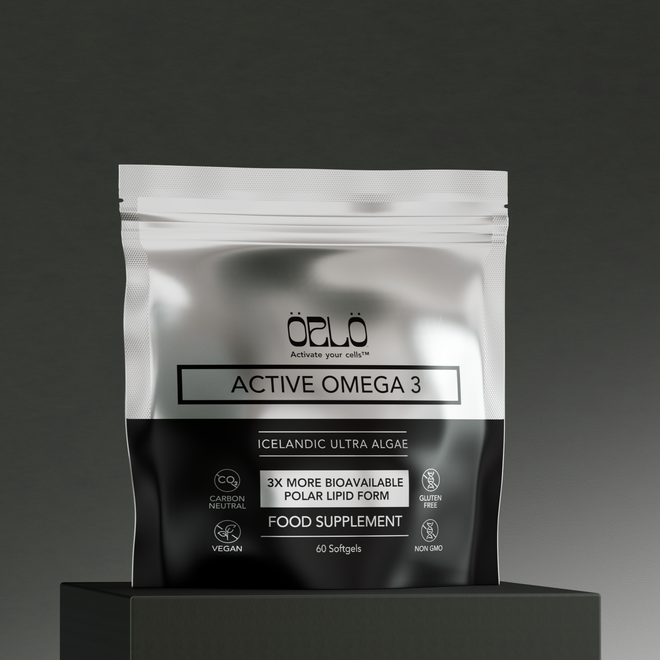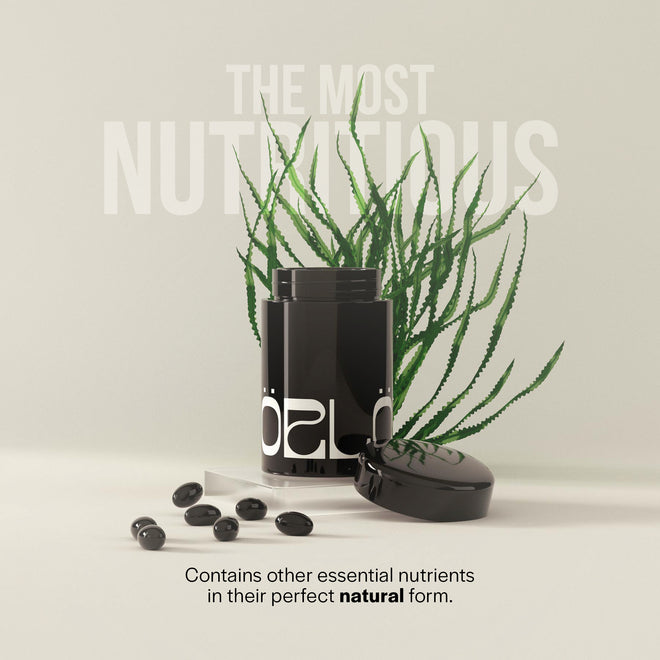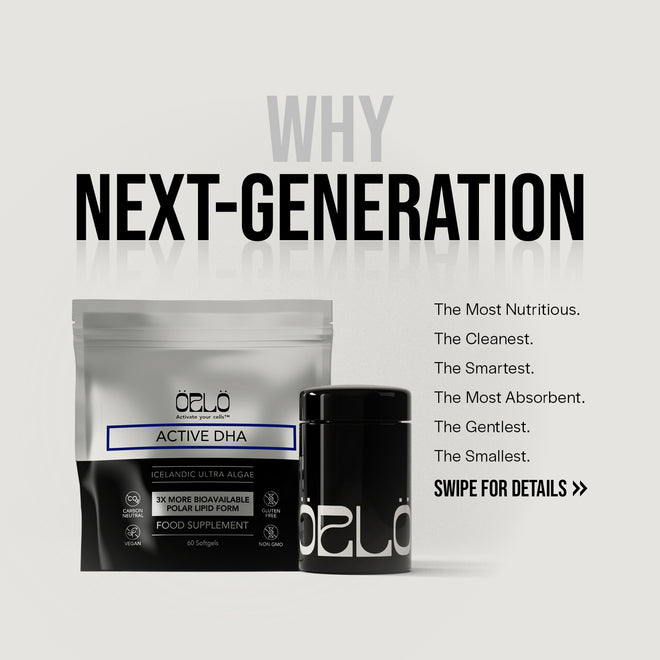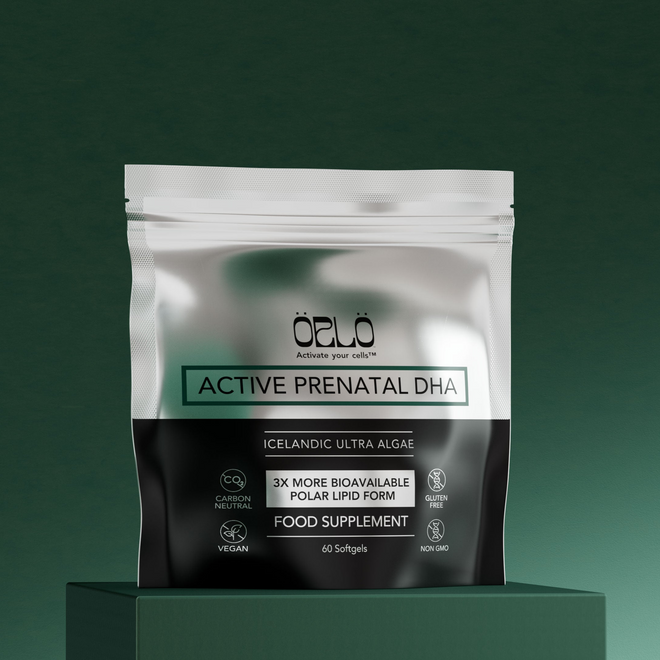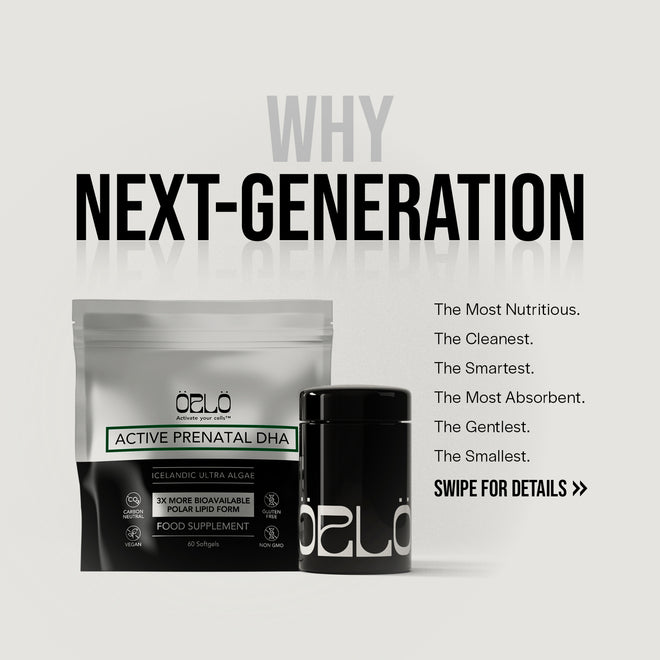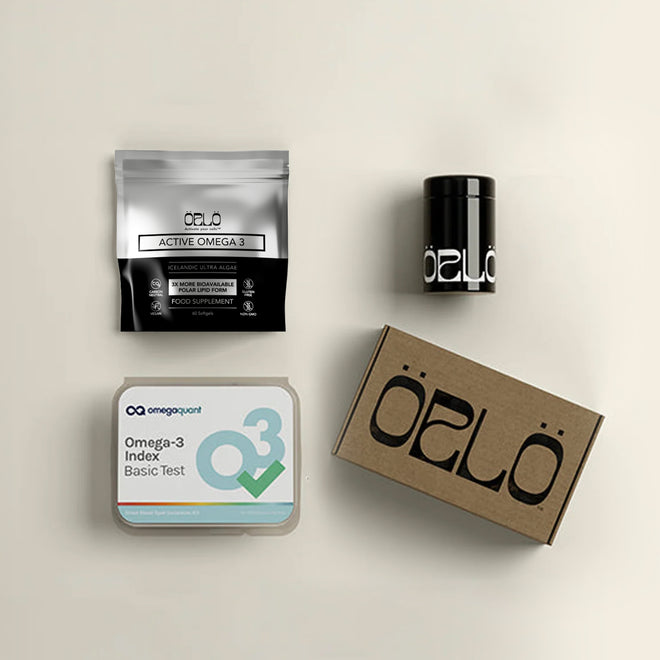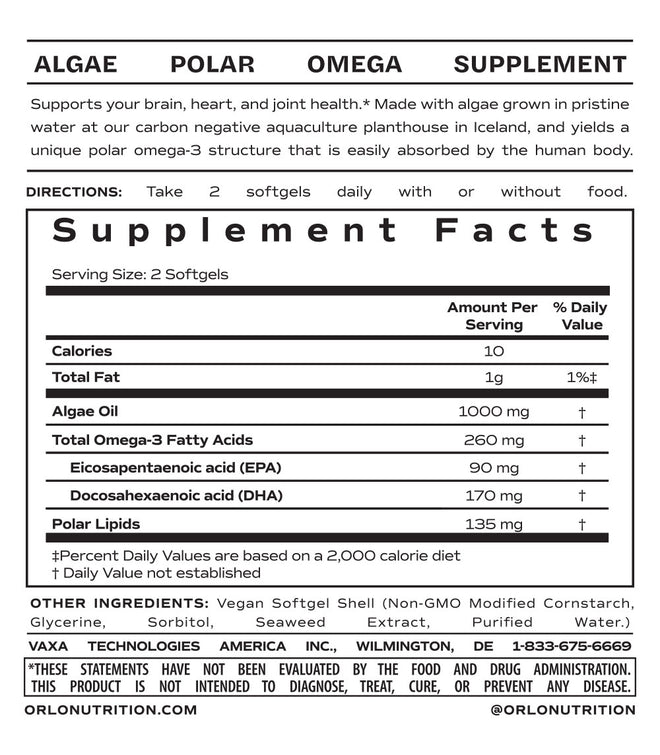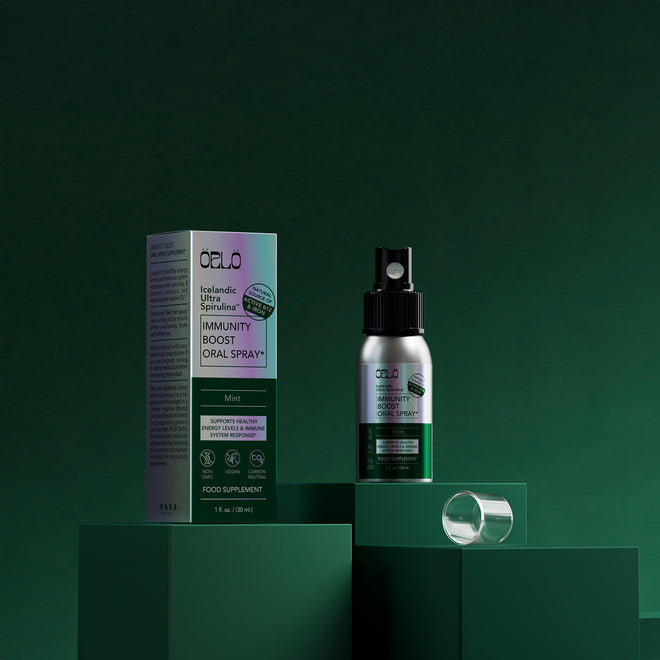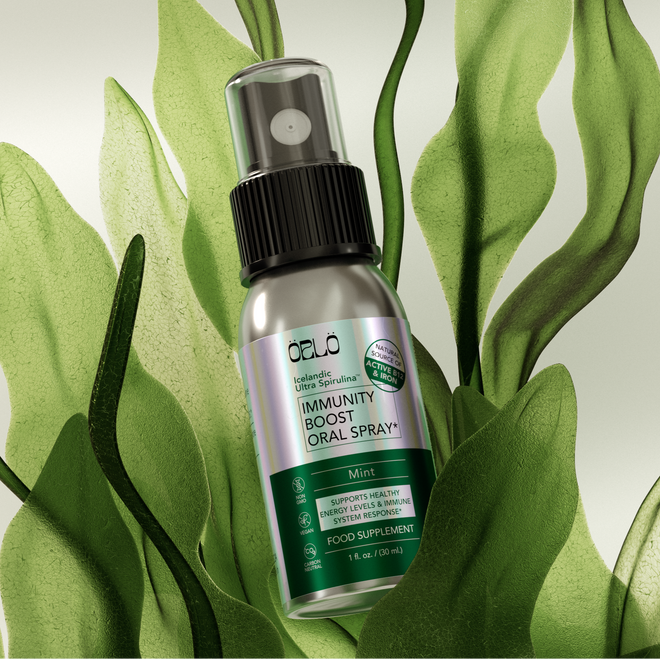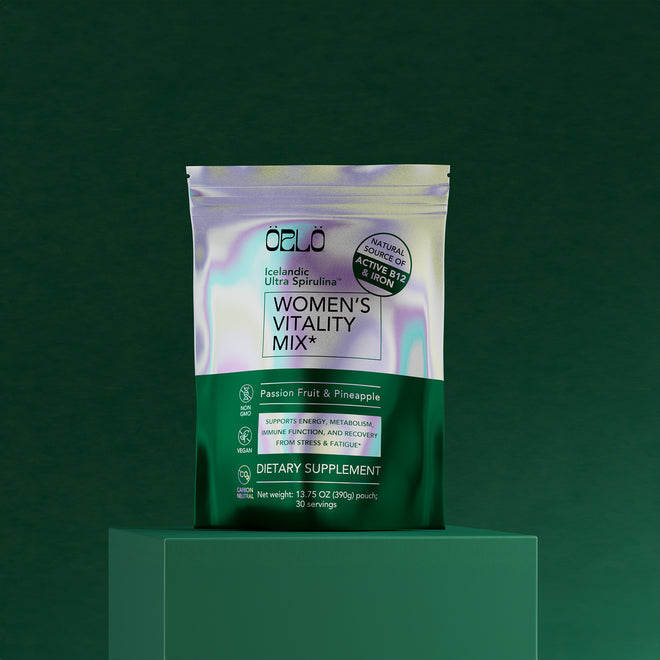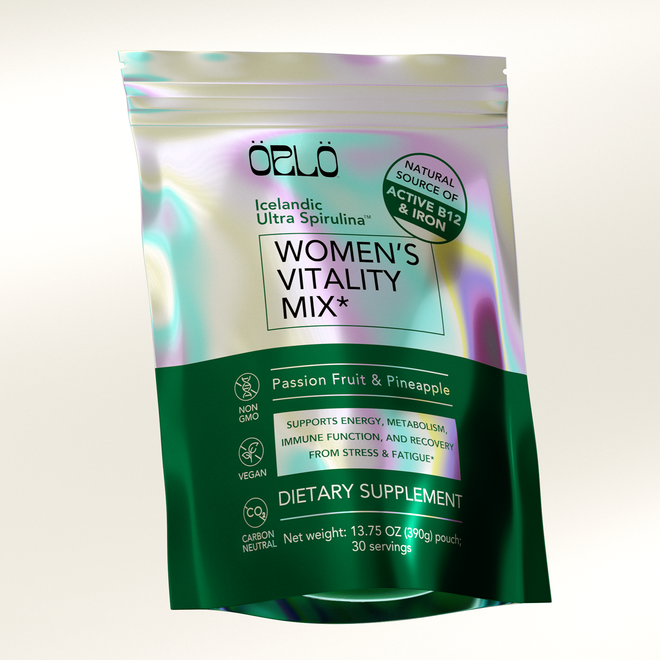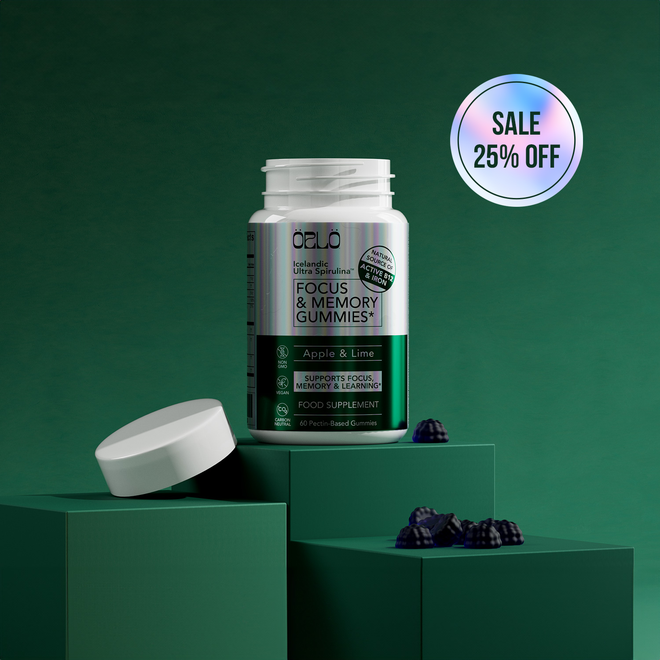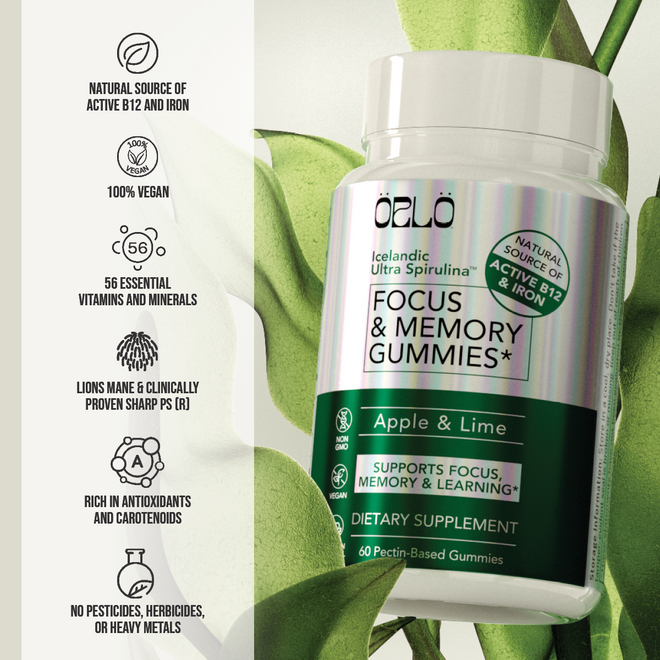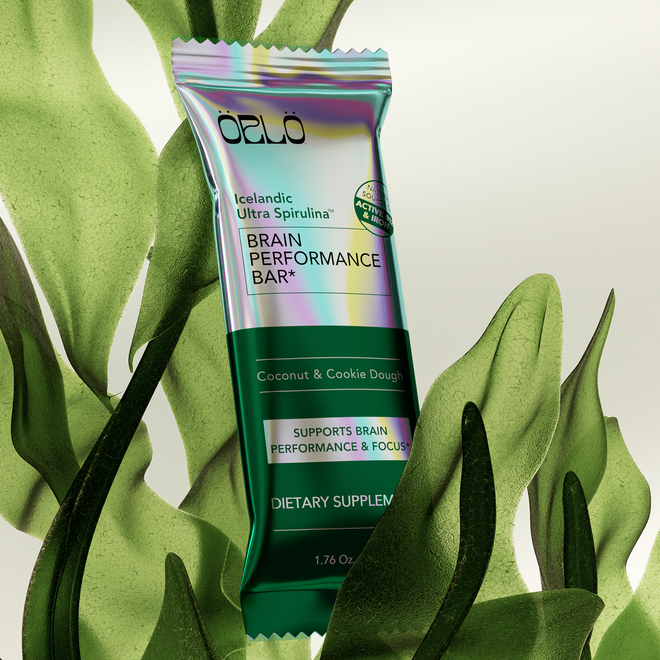25% Off - use code: HOLIDAYS
Eat To Beat Your Diet: Dispelling Myths About Fats And Metabolism With Dr. William Li
Watch the episode here
People often equate diet to the amount of fat we need to eliminate in our body. We see that excess body fat and start blaming our metabolism, so we go into these diets—which are often unhealthy—only to find them not working. Dispelling the myths about fats and metabolism in relation to our diet, Dr. William W. Li joins Corinna Bellizzi in this episode. Dr. Li is an internationally renowned physician, scientist and author of the New York Times bestseller Eat to Beat Disease. Coming back to the show, he continues to give us a new way to think about our health through his new book, Eat to Beat Your Diet: Burn Fat, Heal Your Metabolism, and Live Longer. It’s an anti-diet book that will upend what you thought you knew about our health. So follow along and learn how you can elevate your health, improve your metabolism, and improve your health defenses. Don’t miss out!
Key takeaways from this episode:
- Myths about fats
- The Four Phases of Metabolism
- How to clean our metabolism as we get into our mid-life
- The two colors of fat in our body
- The holy trinity of beverages for metabolism
Guest Social Links:
Website: https://drwilliamli.com
Instagram: https://instagram.com/drwilliamli
TikTok: https://tiktok.com/@drwilliamli
---
Eat To Beat Your Diet: Dispelling Myths About Fats And Metabolism With Dr. William Li
In this episode, I’m joined again by one of my very first guests on this show and one of my favorites to date, Dr. William Li. He’s here to talk about his new book, Eat to Beat Your Diet. Dr. Li is an internationally-renowned physician, scientist, President, and Medical Director of The Angiogenesis Foundation.
In our first interview, we discussed his New York Times bestseller, Eat to Beat Disease: The New Science of How Your Body Can Heal Itself. He’s back again to discuss this very book, Eat to Beat Your Diet: Burn Fat, Heal Your Metabolism, and Live Longer. It will be out this March 21st, 2023. Before we get started, I’ve got to share that disclaimer. When we dig into the science of health and nutrition, it’s imperative to remember that this show is offered for informational purposes only. If you have specific health concerns, you’ll want to connect with your healthcare provider. With that, let’s get him right up here.
---
Dr. William Li, welcome to the show.
Corinna, thank you for having me back.
It’s so good to have you here. You’ve been very busy with your masterclass, the courses you offer, and also with this book. I’m personally loving it. It is the anti-diet book solution. To prepare our readers for this work, I would love for you to quickly summarize the five health defenses and then talk about what inspired you to double down and create this book.
In my first book, Eat to Beat Disease, I was writing about food and health, which we’re all interested in. What I wrote about is that when it comes to food and health, it’s not just about the food. it’s about how our body responds to what we put inside it. When we put good food inside it, our body responds by activating health defenses and there are five of them.
The first is Angiogenesis, which is how our body grows blood vessels. We’ve got 60,000 miles worth of blood vessels to bring oxygen and all the nutrients that we eat to every cell in our body. The second health defense is our Stem Cells. We regenerate and rejuvenate from the inside out. Third is our Gut Microbiome, which as we all know helps with our gut health, but importantly, our gut health helps our mental wellness. Our mood helps us heal from the inside and lowers inflammation.
The fourth health defense is our DNA much more than a genetic code. Our DNA protects us from harm in the environment like ultraviolet radiation or radon from the ground and harmful chemicals that we might eat in our food. Finally, our fifth health defense is our Immune System, which is much more powerful than we ever thought. Not only does a strong immunity protect us from invaders from the outside like bacteria and viruses, but it also protects us from invaders inside our body like cancer cells.
What I wrote in my first book is that foods can activate these health defenses to help us raise our shields. When I was done with the book, I asked myself, “Where do you go next?” That’s what Eat to Beat Your Diet is about. It is a sequel that says, “From wherever you are, how do you get to that next level? If you’re good, how do you get to great?” That’s how you eat to improve your metabolism. That’s where the answer lies.
In a quick review of the book, you dive into fats and some myths that we still need to work to dispel about fats, white adipose tissue versus brown fat, how these fats can impact our hormones and dictate our health, and even how our metabolism works. Let’s dive into the research a bit. What is it that you’ve found through this journey?
All of us who are walking around and reading this have the same experience, which is we associate body fat with something unpleasant. All of us have had this experience. You step out of the shower and out of the corner of your eye, you see the reflection in the mirror and there might be a lump or a bump that you’re not happy with. You then step on the scale, start to curse body fat and blame your metabolism. This is such a common scenario.
I’m a scientist so I want to understand better where the fat comes from. Fat doesn’t appear in your body. If you take a look at babies, healthy babies are chubby babies. They’ve got big chubby cheeks, big tummies, and arms and legs like those circus balloons that the clowns make the little poodles out of. Fat in a baby is good. Where does fat come from?
When the mom’s egg met the dad’s sperm and it turned into a ball of cells in the uterus, the first tissue that forms is the circulation because every organ that forms will need to have a blood supply. Second tissue that forms are your nerves because every organ eventually will need to have instructions coming through the wiring of our nervous system to tell it what to do. The third tissue that form is body fat. Body fat forms in little cells called Adipocytes which means tiny fat cells.
The fat forms around our blood vessels like a sheet of bubble wrap that goes around your blood vessels. The reason it does this is because body fat or adipocytes are fuel tanks for the food that we eat that get goes into our bloodstream that are later on going to be stored as energy in our fuel tanks. Our metabolism can help our body do its thing.
I always tell people jokingly, “We all had fat before we had a face that we could stuff with food. Stop blaming the food. Let’s think about what it is that our body fat does for us.” This is the big discovery. Body fat has at least four unsuspected functions. We used to think that fat is insulation or blubber like in a whale, but that’s not the case. Our fat is like a cushion. Thank goodness we have it because if we didn’t have body fat and we slipped on a rug and fell on the floor, our organs would burst open. It’s a good thing we have good body fat as a cushion.
Second, our body fat remarkably is a hormonal organ. It’s an endocrine organ. An endocrine organ is like your thyroid, adrenal glands, ovaries, and testicles. They make hormones. It turns out that our body fat or adipose tissue which is very normal forms in the womb and secretes hormones. What are the hormones they secrete normally to help our metabolism? They secrete at least fifteen of them. One of them is called Leptin. Leptin is sometimes known as a satiety hormone, which means fullness. I like to think about it not as an off-and-on switch, but as a volume switch. When you turn the volume up with leptin, you’re not so hungry. When you turn it down, you’re getting hungry.
Another hormone that your normal healthy body fat secretes is called Adiponectin. It’s the name of a hormone. However, this hormone is very important. As a doctor, if I asked you to draw a tube of blood that I sent to the hospital lab to measure all of the hormones in your body like your cortisol, thyroid, or adiponectin, your adiponectin will be 1,000 times higher than every other hormone in your body. The reason is because our healthy fat makes adiponectin works with our insulin in order to help our metabolism draw energy from the blood to store it in the fuel tanks.

The only reason that we have energy is because we eat food. Food provides the fuel in our body like going to a gas station to fill up your tank. In order for your body to absorb that fuel, we need adiponectin to collaborate and partner with insulin to draw that fuel in. It’s 1,000 times higher than any other hormone because that’s how important our energy is. That’s normal healthy fat with our metabolism.
If adiponectin is the gas pedal to help us absorb fuel more efficiently and faster, another hormone is called Resistin which is like a brake. If you’re driving on a highway, get into the fast lane, time to push the adiponectin more energy and fuel, but not so fast as the car ahead, you hit resistin to slow down. This is how these hormones work.
This is the first time I heard about resistin. I had done some reading on things like resolvins, which support the resolution of inflammation, protectins which protect and support your DNA, and how Omega-3s, which are source fats, like EPA and DHA impact those systems. When I learned about this new one, my big question comes up, is there a connection between the types of fats we consume and this particular action in the body?
We’re talking about these hormonal factors that functioned like the operating system in your laptop. When you got your laptop from the computer store and started it up, it’s hardwired to do its thing. These hormonal functions are hardwired from the time we’re born all the way to our very last breath to do its thing. One of the startling things that I write about is a most ambitious study of human metabolism undertaken in history that was published a few years ago that showed that all humans only go through four phases of metabolism over the course of our life.
All humans only go through four phases of metabolism over the course of our life.
I’m so glad you’re talking about this. I read this section of your book and I was mind blown. Tell us about those only four phases.
I’ll tell you how it links up to your question about how the fat we use. What we eat, how we eat, and when we eat all affect our metabolism in different ways and can influence our hormones. What’s important to understand is how we’re wired. What is our operating system like? When I started to write Eat to Beat Your Diet, I wanted to write about metabolism and not dieting. In fact, the title itself Eat to Beat Your Diet is a trick title. It’s not a diet book. It’s an anti-diet book as you said because it’s about what we know about our metabolism based on the new signs of the metabolism that upends the myth that we all walk around with.
People say, “You’re either born with a fast metabolism or a slow metabolism.” That’s why some people are skinny as a stick and don’t have to worry about their food. Other people are battling with their weight in their lives and they always need to worry about what they eat. It’s not the metabolism doing that. Another myth is that when kids are growing up and in their teenage years, they’re eating two dinners and bouncing off the walls that their metabolism is sky high.
Another big myth is that when you reach middle age, whether you’re a man or a woman, in your 40s and 50s, and then get to your 60s, your metabolism naturally slows down which is why many people are struggling with their weight when they reach middle-aged. It’s also not true based on how our metabolism is hardwired. I’ll explain to you how we discovered that these are all myths.
About a few years ago, a paper appeared in the journal of Science. It’s a mind-blowing paper because Science is one of the most prestigious scientific journals that talk about discoveries like fundamental, mind-blowing, game-changing, and human advancement kinds of discoveries. This was a study that was published. A researcher named Herman Potzer worked with 90 other collaborators. This is a big research study. They came from twenty different countries all around the world. They studied metabolism in 6,000 people.
What’s remarkable is they studied the people all in exactly the same way. They gave them a drink of water or H2O. They did is they were able to chemically tweak the H, which is hydrogen, and O which is oxygen so after you drink the water, they could measure what your metabolism does to those atoms. They could measure metabolism using their breath, blood, and urine. They measured a metabolism of 6,000 people, but that’s not all. Of the 6,000 people, they studied people that were two days old or newborns and also people that were 90 plus years old, the last chapter of life, and everyone in between.
This study in exactly the same way studied metabolism across the human lifespan. When they got the results, initially, what they found was that everybody had a different metabolism. It was all over the map like you would expect. We now live in the era of supercomputing where we can crunch a lot of data. What they did is they developed an algorithm where they could go into every individual result and correct the size of the subject so they could remove the effect on the metabolism of excess body fat.
When they removed all the effects of excess body fat from the 2-day-old, 20-year-old, 40-year-old, 60-year-old, and 90-year-old, the result they found was like pulling the cloak off the statue of David for the first time. What they found was literally stunning. All humans only go through four phases of metabolism. We’re all born with exactly the same metabolism at day zero. The first year of life is phase one. Our metabolism rockets like a spaceship. It goes sky high to 50% higher than what our metabolisms when we’re an adult.
Phase two is from 1 year old to 20 years old, our metabolism goes down. This is right through teenage years, adolescence, and eating 2 to 3 dinners. Metabolisms going down to adult levels. Phase three is the metabolism 20, 30, 40, 50, and 60 and it is rock solid. Our metabolism is hardwired to not change one bit between 20 and 60. What that means is that 60 can be the new 20 if you allow your metabolism to do what it’s designed to do or our operating system.
Finally, in the fourth phase from 60 onwards to 90, you have a slight decrease in your metabolism by about 17%. If you’re lucky enough to live to be 90, your metabolism will be about 17% of what was when you were 60 which should be what it was when you were 20. The question is why people have different metabolisms. They could add the effect of fat back into the system. What they found is not that the metabolism that you were born with is your destiny to grow fat and gain weight, it’s the other way around.
When you add the effect of body fat back to these four patterns, extra body fat crushes your metabolism. It’s not that a slow metabolism can cause you to gain body fat but body fat crushes your metabolism or slows your metabolism. The good news is that means is that we have the power to unleash our inner metabolism or our operating system. We can clean it up. It’s like your laptop that has an operating system. If you got glitchy screens because you got viruses on it, you got to clean the virus. We can clean our metabolism up by fighting harmful body fat and unleashing who we are inside. That to me is the secret to elevating our health, improving our metabolism, and at the same time, it also improves our health defenses.
We can clean our metabolism up by fighting harmful body fat and unleashing who we are inside. That is the secret to elevating our health, improving our metabolism, and at the same time, improving our health defenses.
There are a couple of things that drew me to think about from the prior knowledge I came to your book with. One of which was that we essentially build the same number of fat cells that we’ll have by the time we’re toddlers throughout our adult life. We then start producing new fat cells in our later life starting around age 60. I wonder as I was reading through this what the correlation might be. This is brand new research, but I wondered if this was something that you had put any thought into.
Essentially, our fat cells create more of a situation where we can become fatter, but those fat cells are essentially the same number. They’re just getting bigger, swelling, creating more space, and taking on more. How do we potentially look at this whole picture and then help people get to the point where they can say, “I can reduce my body fat percentage and start to turn on this thermogenic capacity of my body’s natural metabolism again?”
Let’s dive right in by trying to explain metabolism in a way that anyone can understand, even though it’s very state of the art. Most of us have a car and drive it. We don’t think about the fuel and the process of getting energy to the engine so we can get our way. We just get in a car when we drive it. Our car runs on fuel and in the same way, our body is an engine that our metabolism uses fuel to run our engine. We don’t normally think about our metabolism. We just do and go.
Now, back to the car. We don’t think about the energy in our car until we’ve checked the fuel gauge. If we see the fuel going empty, what do we do? We pull over to the gas station, take the pump out of the nozzle, put it into the gas tank, push the container that gas comes out, fill up the tank, it clicks and stops, put it back, and drive off.
In our bodies, it’s the same way. Although we don’t have a fuel gauge that you can see like in a car, our organs and brain does continuously monitor the amount of fuel in our body that our metabolism uses in order to be able to keep our operating system functioning. When the fuel gauge in our body runs low, we don’t pull over to the filling station. We pull over to the dinner table, refrigerator, pantry, or restaurant. That’s basically what we do.
It’s the same as a car filling up the station. When we reach over for food and put food into our body, our food provides our fuel and our metabolism takes that fuel and powers up all of our cells. One of the things that happen is when you put food in your mouth, your pancreas releases a substance called Insulin. It’s a hormone. Insulin works with the adiponectin that your normal healthy fat makes. They partner together and say, “Let’s go draw that fuel from the food into our cells.”
Fat originally starts like a bubble wrap around blood vessels. When you eat, the food or fuel goes into your blood and now your metabolism is able to take it. Your insulin and your adiponectin take that fuel from the bloodstream and give your body the fuel it needs. However, anything extra gets packed into those tiny little fat cells.
As you say, most of us are born with the fat that we’re going to always have. What happens is that a single fat cell can expand about 100 times in size. When you’ve got extra fuel, you’re going to store it up in the fat cells. It gets bigger and then it’s stretched. Good thing you’re not eating too much because your tank is full. Now you can go up out your way when you’re done eating.
Back to the car for a second. When you fill the tank at the very end when the tank is full, the clicker goes and no more gas comes out. Can you imagine what would happen if there was no stopper or no click at the end of the gas pump? Your tank would fill up and overflow very quickly, run down the side of the car and the tires, pool around your feet, and then you’d be standing in a dangerous flammable toxic mess. You’d have to back away and wait for the air to evaporate the gasoline. It’d be very dangerous to be in there.
When we sit down at our table to get our fuel, unfortunately, our bodies do not have a clicker. When our tank or our fat cells are full and we have all the energy we need, we can still keep on eating. When we eat like overflowing your fuel tank, you got a lot of fuel and it’s got to be stored someplace. Our metabolism with insulin and adiponectin starts filling up not one cell, but another cell blowing it up 100 times. There’s another cell then it fills that up 100 times. Now, you get another one. You got to keep on filling your tanks up, but if you keep on overeating, all of a sudden, all your fat cells are full, but the fat mass is starting to get bigger because you’re filling up the mass 100 times. You’re out of fat.
Even when you’re a child, our fat contains stem cells. Stem cells can regenerate more fat. When you keep on eating, your body will tap into the stem cells, make more fuel tanks, and fill that up. If we’re still eating, now we’re going to make another stem cell. These adipose stem cells continue to make more fuel tanks so we can make more fat, even when we’re young.
This is why if you take a look at childhood obesity, which can happen. Different kinds of things are influencing body fat, but at the end of the day, this is how fuel works. When your insulin is up and you are eating, your metabolism is completely focused on storing the fuel because that’s what it’s doing. It’s supposed to store that fuel for later. Even if you’re overeating, it’s still going to store it. When you’re not eating, your insulin levels go down. When insulin levels go down, your metabolism switches gears and now it can say, “No more fuel to store. Let’s go start burning some fuel.” When we’re not eating, also called Fasting, which happens when we’re sleeping every night, our metabolism switches into fuel-burning mode.

Over the course of months or years, if you keep on overeating, you’re going to accumulate a lot of body fat or a lot of extra fuel. Even when you’re sleeping and trying to burn that fat, you’re not going to burn enough of it. This is one of the ways we can think about how to optimize our bodies. We think about the amount of time, how to use our body’s natural hardwired fuel-burning system, and how to control the amount of food that we eat so we don’t overflow our tank. We give our bodies enough time to burn down that fuel.
Let’s say we had a healthy foundation and we didn’t build a ton of extra fat cells in our childhood years, but now we’re adults and we at least think that we have the symptoms of a slowing metabolism. I personally have not noticed a real slowdown, but what I’m coming to terms with in reading your book is that my activity level shifted when I started working from home and then shifted again when I had two young children at home. You might perceive yourself to be expending the same number of calories but not be doing some of the same things. What do you think we can learn from this and how we can turn on this brown adipose tissue or this brown fat that we learn about reading your book?
First of all, you bring up such an important point, which is that when we get further in our life journey, life happens. We get busy, get distracted, and are stressed out, whether it’s family stress, emotional stress, financial stress, and work stress. This is the modern society we live in. All those things affect how we eat, the choices we eat, how much we exercise, how physically active we are, and how much sleep we get. Stress itself causes inflammation, which can impact our metabolism as well. Not surprisingly, as we get into our later years of mid-to-life, it’s a lifestyle issue that tends to sit on our metabolism, but that gives us the agency to be able to deliberately look at those pieces of our life that we can improve.
Exercise of course is a good thing. You’re burning the fuel or calories, but you don’t have to get a trainer and work out at the gym if you don’t want to. You don’t have to train for our marathon. Some people do that and that’s great, but not everybody needs to. It turns out that if you spend 30 minutes every day doing something physically active, it could even be walking around your house, walking up and down stairs, or going for a walk after dinner. For anything that’s regular that requires physical activity, you don’t have to break into a sweat. You are burning fuel. If you think about that, it makes a lot of sense. If you take your car out for a spin, you’re burning fuel. That’s what we need to be able to do at the very minimum.
When we’re tired and exhausted at the end of our day and end of our wisp and all we want to do is sit down and veg, and maybe have some snacks, that’s so common. It happens to all of us. It’s being mindful and being physically active. One of the things I read in my book that I thought was so interesting is that working out or exercising is good for you, but it turns out researchers have even looked at fidgeting like shaking the leg or tapping everything burns fuel. That’s my point. You don’t have to be an acrobat, be in a marathon or an Ironman the training for that in order to be able to burn fuel. Even small movements count. That’s one thing.
The other issue I want to address before talking about what to eat is stress management. It is also very important because when we’re highly stressed out or overworked, our metabolism is thrown off of whack as well. It derails our metabolism. In my book, one of the things I write about that’s so interesting is that repressed anger and frustration derail our metabolism. In fact, studies have been showing that in groups of women, those women who have a lot of repressed anger have more difficulty managing their body weight. Again, mindfulness, seeing a therapist, meditation, yoga, getting together with friends, and managing stress can also help your metabolism.
Let’s talk about eating because that’s something that we do have the agency three times a day to make some decisions on. First, we talked about this, don’t overeat. If you overeat, you’re going to need to make more fuel tanks in order to be able to store that fuel. Don’t do it. It never goes for seconds. Quit the clean play club. Be very careful about how much you take. That’s a volume thing.
Second, when you are not eating, your body is burning fuel. One of the cool practical ways for anybody, no matter where you are in your life to burn a little extra fuel or fat is to try to get as much time you’re not eating as possible. Here’s how it works. If you go to bed for eight hours, which is what you should try to do because that’s the optimal amount of sleep through your metabolism, brain health, and immune system.
Let’s say you go to bed at 11:00 and you get up at 7:00 AM. That’s fat-burning time because you’re not eating. Let’s say you eat dinner at 7:00 PM the night before and finished eating dinner and put the dishes away at 8:00. A lot of people will snack later at 9:00 or 10:00. Maybe a bedtime snack, open the fridge, and sneak an extra slice of whatever.
The moment you do that, you put in insulin and now you’re not burning fat anymore. What I do is I basically say, “When I put my dishes in the sink, I’m done eating.” I’m not going to eat anything afterwards. I’m not going to snack or bedtime snack. If I eat at 7:00, I stop eating and put the dishes away at 8:00, and I go to bed at 11:00, I’ve gained 3 extra hours of fat-burning or fuel-burning time. That’s 8 hours overnight and 3 hours after dinner.
When I get up in the morning, I don’t do what my mom used to tell me to do. “Get up. Hurry up and eat breakfast. Catch the school bus and get to school on time.” We’re adults. When I get up in the morning, I take my time to get ready, take a shower, get dressed, check my email, go for a walk, or do something else before I eat breakfast. I wait about an hour to take my time before I break my fast, change my metabolism, and back to fuel storing mode. I’ve again gained an extra hour. Do the math. Three hours after dinner or when dishes go into the sink and eight hours overnight. That’s eleven hours. Add one more hour in the morning so that’s twelve hours of fat or fuel-burning time. Twelve hours is half the day. I’ve spent 50% of my existence burning down fuel and still pretty reasonable.
I ate breakfast and dinner in normal ways and I don’t eat too much. Without having to think too much about it is one way to use your body to help you get that operating system to do what it wants to do. You want to take it to the next level. You asked about brown fat. Eating ultra-processed foods, lots of saturated fat, overloading and growing your fat cells, artificial preservatives, artificial sweeteners, artificial coloring, and artificial flavoring, all those things cause inflammation and derail our metabolism. When our metabolism is derailed, we start to gain extra body fat.
When our metabolism is derailed, we start to gain extra body fat.
At that point, we start losing our ability to burn fuel and start to store extra fuel. We don’t know where we are. On the other hand, I write about 150 foods in my book that have been shown in a lab and in clinical studies to help you burn body fat by activating brown fat on one hand. Number two, by preventing the formation of more fat or slowing down the loading fuel in your tiny little adipocytes. In some cases, even redirect the stem cells. Instead of copy-pasting and making another fat cell, fuel cell, or white fat cell, it’s going to make a brown fat cell.
What is brown fat? Brown fat is this surprising feature of fat that we haven’t talked about yet. It turns out there are two colors of fat in our body, white fat and brown fat. White fat is the wiggly jiggly stuff. It’s under your arm, under your chin, and the muffin top. It’s on your thighs and your butt. Most people don’t want too much of that subcutaneous under-the-skin white fat. You can see that part.
The white fat is also the kind you can’t see lumpy, bumpy, wiggly jiggly except it’s found inside the tube of your body. That fat is very dangerous. It’s called Visceral Fat. Visceral means gut. Gut fat is like a baseball glove that wraps around your organ. When you’ve got too much of it, it chokes your organs and it’s very inflamed. Even skinny people can have visceral fat that can cause inflammation and disease. It can cause your metabolism to go haywire. That’s white fat. A little bit is good. The right amount is good and normal is good, but too much is bad.
It’s bad in almost every single way because it derails your metabolism. I’m not talking about vanity. That’s a different conversation to have. Everyone has their own taste in body shape and how it looks. I’m not there. I’m talking as a doctor and scientist. I’m talking about the fact that when you have excess body fat, you derail your metabolism. However, it turns out, even though your metabolism is hardwired to not burn fuel when you’re eating, there are ways of getting around that to burn fuel even when you’re eating. That is to activate brown fat.
Brown fat is the other color. Brown fat is not wiggly jiggly. Brown fat is paper thin. It’s crazy. It’s not subcutaneous so you can’t see it. It is close to the bone. It’s pressed along your neck, behind your breastbone, under your arms like a bra strap, a little bit behind your back, and a little bit in your belly. When you eat certain foods, brown fat lights up or ignites like a space heater.
You can turn it on. With cold temperatures, you’ll ignite it to stay warm, but they’ll also turn on if you eat certain kinds of foods like mushrooms, broccoli, brassica, bok choy, and Swiss chard. Cauliflower, chili peppers, white beans, lentils, and capers light it up. There have been discovered to light up your brown fat which is remarkable. Also, whole tomatoes, tomato paste, omega-3, and fatty acids will light up your brown fat.
This is how you can use good fat or brown fat to fight bad fat, which is excess bad fat or white fat. Where is the brown fat drawing the fuel from? It’s sucking up the fuel like on your gas stove top. When you’re going to boil some water, that fuel is coming from someplace. Your brown fat draws that extra fuel to create that space heater function from your white fat. It starts to burn down that fuel. Foods can activate that process, which is cool. Most people think when it comes to metabolism and body fat, the last thing you would do is eat foods to activate your metabolism and get rid of fat. For the first time, you can love your food and your metabolism that burn down harmful body fat.
You do also put some lists of the foods that you can eat to activate these things within your work. I find myself also thinking about that Mediterrasian diet that you’ve coined as this amalgamation of both Asian cuisine and these Mediterranean ways of eating to help stimulate our body’s natural ability to maintain healthy metabolism and a healthy weight.
I’m also finding that a lot of what the recommendations stem around comes back to foods that have a high fiber content that may not have a very high total calorie density. The nutrition you’re getting from each of these foods is packed with micronutrients that we may not be so accustomed to measuring like protein, fat, and carbohydrates. It’s like one step beyond that.
We’ve also learned through talking to you in the past about the power of green tea or even components of black coffee for example. One of the things I wanted to make sure that we connect to and get people thinking about is the empty calories that we tend to consume in the day-to-day. They often come in liquid form like wine, beer, lattes, Frappuccinos, and then all of those extra things that we may be consuming after we put our plates in this sink at 8:00 PM so that we can set ourselves up for success while adding these great things to our diet. I was hoping you could comment on not only the integration of some of these fabulous foods but also on saying goodbye to perhaps some of our overconsumption of these liquid calorie sources.
It’s all about balance and making mindful choices that you realize, “I’d rather do something good for me that I enjoy rather than doing something bad for me that I might enjoy or might not enjoy.” The most commonly consumed beverage in the world has no calories. It’s water. Research has shown that water can activate brown fat too, which is interesting specifically room temperature water or anything colder than room temperature.
We think it’s because there are little thermostats inside our stomach that when you put water that’s colder than our body, the thermostats activate. That’s our core body temperature. You don’t want it to be cooler than your core body temperature, so our brown fat lights up. It’s super simple and there are no calories. It also makes us feel full. We’re less likely to overeat with water.
I have a whole chapter on beverages. The second is tea. Green tea does a lot of things for metabolism. It also helps improve your circulation, immunity, and gut health. There are lots of things at green tea is beneficial for if you drink it straight. If you start adding other things to your green tea, you start making it the Frappuccinos that you talked about or something you drive-through and order it like the Machaccinos.
Once you start adding other things to it, like dairy or other types of artificial shots of flavoring, you’ve changed the nature of what it is. You’ve created your own ultra-processed food. That’s common. If you look at the cultures like in the Mediterranean and Asia, they tend to drink these beverages pretty straight. Green tea is great. People used to say, “Black tea is fermented. It’s not good for you.” It turns out black tea activates your metabolism and brown fat. The blackest of teas that you can possibly get, I can tell you is a tea that most people may not have heard about, but you can order online. It’s called Pu’erh tea.
That’s what I’m drinking. I made it in honor of this interview.
I love Pu’erh tea. It’s smokey and dark.
It can replace coffee if you’re into it.
That’s right. It’s like chicory coffee. It’s often consumed in China as a digestive tea or beverage after dinner, but what’s cool about it is it’s a fermented tea that has its own healthy bacteria for the gut. Its own bacteria that’s evolved in Pu’erh tea. It’s a probiotic tea and good for your gut health as well, which is cool. Don’t monkey with it by putting all kinds of other flavorings and stuff. I always think about this when I see teenagers lining up at the mall in front of the bubble tea stand. You have tea and then they’re adding all kinds of stuff to it. It tastes great, but you’ve doctored it and added all this other stuff to it that probably or definitely isn’t going to be good for your metabolism. People drink a lot of it.
It’s the same deal as coffee. Tea or catechins, EGCG which activates your metabolism. Coffee has got something called Chlorogenic Acid. Organic coffees have at least 30 times more chlorogenic acid than conventionally grown coffee. Chlorogenic acid turns on your brown fat and also prevents white fat from forming huge globs. It redirects the white fat to turn into brown fat. It ignites their space heater function.
Again, if you want to drink your coffee, think about how they do it in Italy. They basically take a straight cup of coffee and drink it. That’s how I drink coffee every day. There’s this tradition where you go to the drive-through and you look at all the things, especially the holidays. “When does the pumpkin flavor come back?” You’re doctoring it up. If you want to activate your metabolism and fight body fat, the holy trinity of beverages are water, tea of all kinds, and coffee. Have it straight.

To your point about the things that you could consume after 8:00 PM, it might be water or herbal tea. If you don’t have an intense reaction to caffeine, it might be a cup of tea that is like a Pu’erh or green tea. These things come with things like catechins that support your overall health. To your point also in your earlier work, not having coffee with milk because dairy milk can create some noxious chemicals when you consume it when it combines with coffee, correct?
The discovery of what happens when you put dairy into coffee, so not milk but dairy, it has got milk fats. That’s what dairy is from a cow. Milk fats form soap bubbles. If you’re a chemist and you could look under the microscope, you would see that fat would form little soap bubbles whenever you have fat. What happens when you put dairy or cow milk in your coffee, those little soap bubbles start forming inside your coffee. You can’t see it and it doesn’t look like soap bubbles, but it’s there. What those soap bubbles do is they form little bubbles around the chlorogenic acid and the other bioactives like the polyphenols.
When you drink that coffee, those soap bubbles don’t get absorbed directly. You’re blocking your ability to absorb the chlorogenic acid. Most of it doesn’t get absorbed in your stomach. Most of it goes down the lower part of your gut and you don’t get the benefit of it. It’s not that you get toxins, but you miss out on the good stuff and quite a lot of it. The more dairy you use, the more soap bubbles form, and the less good stuff you’re going to absorb.
Thank you for that clarification. Something else that you mentioned within the book is that when you got to the work of recommending all of these dietary changes or looking at eating to beat the disease, there was some level of concern that people that read the book might become overweight, but you found that the exact opposite was true and that’s part of what led to this work.
I have also noticed the same thing when it came to consuming the right fats. For instance, you tell people you need to consume more omega-3 and they consumed more omega-3, and you’d get those random calls from people saying, “I started consuming more. I have some pounds that are coming off. I don’t even understand why.” We might both know that a calorie is not a calorie, but what more might you have to share about this?
First of all, again, we lump together the idea of fats into one collective, not so good for you. For example, omega-3 fatty acids are fatty acids, but they’re incredible bioactives, whether in supplement, natural form, platform, or marine form. I read about it, and there’s a whole chapter on seafood. I was quite surprised that we used to always think you have to have oily fish like mackerel sardines, anchovies, or salmon to be healthy but the latest research shows that even not-so-oily fish that still have some amount of omega-3s is enough. You don’t need to go like, “I got to go do overkill.” Even cod has omega-3s. The number of cod omega-3s helps you lose body fat and body weight.
The more omega-3s you consume, the more you’re going to activate your body’s health defenses and metabolism. I always tell people, you get intimidated like, “I don’t know if I want to have that many supplements.” “Okay, then don’t, but have a little. Get started with it and you’re going to feel the difference.” It’s not just any fat. You’re not putting a stick of butter into your body. You’re having fat that activates your health defenses. Not all fat is bad.
It’s the same thing as olive oil. Olive oil is a delicious natural cooking fat, but still fat. Olive oil has polyphenols. Those polyphenols come from the olive plant or the olive fruit. One of them is called Hydroxytyrosol. It’s potent and it activates the brown fat or the space heater all over again. The reason I’m using this is so people then will start to associate a picture or image of the space heating function. Otherwise, it’s a bunch of colors and fat. I want people to understand this is the discovery that allows us to eat foods so that we can take charge of our metabolism.
You’ve separated the book into three primary sections. Within each of these sections, you’re helping to outline a plan for people by the time you get to that third part. It’s organized in such a way that people can take a lot of what we’ve talked about here as well as the resources within the book to build a plan that will work for them and will help support their long-term health. This also isn’t a standard diet book.
Your first book, Eat to Beat Disease and this category was focused on helping people understand the nutrition that they could get from each of these foods. This one, helps people get to the plan. You have sample meal guides and recipes. They’re finding your own way, making it their own, and how ultimately optimizing your own metabolism. It’s taking all of these pieces and integrating them together. I wanted to offer you the opportunity to leave our readers with a closing thought or two, what you would have them take away and ultimately understand that they will get from spending the time with your book.
The great discovery that’s been made about human metabolism is that we can control it. Our bodies are hardwired and our operating system wants to do its thing. We can live our entire human lifespan in good health. No matter where you are in your journey, you can make some subtle moves or easy moves with the timing of what you eat when you start eating or opening your window for eating. Also, when you close your window for eating and then choosing while you’re eating what types of foods you prefer.
I call my style Mediterrasian because I’m Asian. I grew up eating Asian food. I lived in Asia and also lived in the Mediterranean. My point is the way that I eat is to lean into my food and eat delicious foods that I like. I put 150 different foods that are all supported by both research, clinical studies, and human studies. I put the dose that you need to eat too that research has shown how much you need to eat. The doses are all very reasonable. They’re the amounts that we would normally want to eat if we’re eating for health and for pleasure.
It’s time to rediscover our joy of food, not to fear it. If you care about lowering your body fat, losing some weight, and very importantly, increasing your metabolism, fighting body fat ups your metabolism. More metabolism, more energy. More energy, more vibrancy. That’s what we want across our whole lifespan. I put 36 recipes in there. I cook those recipes in my own kitchen. I’m sharing my way of doing it with you, but I emphasize, at the end of the day, you’ve got to tailor this for yourself. That’s how I practice medicine and coaching for healthy eating. Every individual is different. It’s all about you and how your body is wired, but we can all do it.
That’s awesome. You also have some resources that you offer beyond this book. I’ve taken one of your courses, for example, which led over the course of four weeks, and had the opportunity to interface with you directly for that. I also know that you do a free masterclass. What more would you like to share with our readers about the ways that they can engage with you? If they want to learn more, how they can go about that?
The work that I do is like sitting in front of a fire hydrant. It is gushing out information at me. It’s incredible and thrilling. For me, it’s a lot of fun because I’m trained as a scientist and I try to curate it, but I try to get it out to the public. That’s part of my mission. If you want to learn what I’m learning and how I want to make it available for people to share in the upside of the discoveries of science, come to my website. It’s DrWilliamLi.com. Follow me on socials. My handle is @DrWilliamLi on Instagram, TikTok, Facebook, and Twitter. I’m on all of these things. What you’re going to find is I’m giving away little bits of information.
I’ve been involved with biotechnology, developing treatments for cancer, blindness, and diabetes. The reality is drug development is very hard. We don’t want everyone to have to be on medicine, to be honest with you. It’s not equitable. Not everyone can get medicines, even the people that need them, but the food is the ultimate fair way of not just treating disease but improving our health. That is right there in front of us.
Food is the ultimate fair way of not just treating disease but improving our health.
My mission is to get it out to you. Come to my website and sign up for a free newsletter. Come to my masterclasses, they’re free. For people who want to do a deep dive, I do mini-courses. I do month-long courses as Corinna has taken. It’s all about being human and part of being human is sharing. That’s what I want to do for everyone.
Thank you so much again for coming and spending this time with me. I enjoyed it. I look forward to completing your book. I didn’t get through the recipes yet. I’ve had it on my iPad and furiously going through it, but it’s incredible work. I learned a thing or two that I didn’t expect. The mind-blown moments about how I can activate the brown adipose tissue to ultimately support my long-term health and turn on the engine within are just so useful. I’m putting it into action. I want to personally thank you for the work.
Thank you very much. Thanks for having me.
---
What a treasure trove. As we mentioned, to find out more about Dr. William Li, you can simply go to his website, DrWilliamLi.com. I also follow him on Instagram and TikTok. That’s @DrWilliamLi. You can find him and many places as well as on YouTube. You’ll find some very in-depth interviews that he is done on some other shows as well. I encourage you to check those things out.
This show is all about serving each of you. If you would like specific topics to be covered or have questions for myself, Dr. Li, or any of the guests that we feature on this show, you can always reach out at @OrloNutrition on social channels. You can also send me an email note at any time to Hello@OrloNutrition.com. I want to thank you all for joining me here. If you learned a thing or two, I hope that you’ll give me a thumbs up, a five-star rating, and even write a review on your favorite platform. Perhaps, you’ll join me as I raise my cup of Pu’erh tea and say, “Here’s to your health.”
Important Links
- Eat to Beat Your Diet
- The Angiogenesis Foundation
- Dr. William Li - Eat To Beat Disease: How Your Body Can Heal Itself with The Right Nutrition with Dr. William W. Li Past Episode
- Eat to Beat Disease: The New Science of How Your Body Can Heal Itself
- William Li
- Free Masterclass
- @DrWilliamLi – Instagram
- TikTok – Dr. William Li
- Facebook – Dr. William Li
- Twitter – Dr. William Li
- YouTube – Dr. William Li
- @OrloNutrition - Instagram
- Hello@OrloNutrition.com
- https://www.Amazon.com/Eat-Beat-Your-Diet-Activate/dp/1538753901
About William W. Li
 William W. Li, MD, is an internationally renowned physician, scientist and author of the New York Times bestseller “Eat to Beat Disease: The New Science of How Your Body Can Heal Itself.” His groundbreaking research has led to the development of more than 30 new medical treatments that impact care for more than 70 diseases including diabetes, blindness, heart disease and obesity. His TED Talk, “Can We Eat to Starve Cancer?” has garnered more than 11 million views. Dr. Li has appeared on Good Morning America, CNN, CNBC, Rachael Ray and Live with Kelly & Ryan, and he has been featured in USA Today, Time Magazine, The Atlantic and O Magazine. He is President and Medical Director of the Angiogenesis Foundation, and he is leading global initiatives on food as medicine. His newest book, “Eat to Beat Your Diet: Burn Fat, Heal Your Metabolism, and Live Longer” will be released March 21, 2023.
William W. Li, MD, is an internationally renowned physician, scientist and author of the New York Times bestseller “Eat to Beat Disease: The New Science of How Your Body Can Heal Itself.” His groundbreaking research has led to the development of more than 30 new medical treatments that impact care for more than 70 diseases including diabetes, blindness, heart disease and obesity. His TED Talk, “Can We Eat to Starve Cancer?” has garnered more than 11 million views. Dr. Li has appeared on Good Morning America, CNN, CNBC, Rachael Ray and Live with Kelly & Ryan, and he has been featured in USA Today, Time Magazine, The Atlantic and O Magazine. He is President and Medical Director of the Angiogenesis Foundation, and he is leading global initiatives on food as medicine. His newest book, “Eat to Beat Your Diet: Burn Fat, Heal Your Metabolism, and Live Longer” will be released March 21, 2023.
